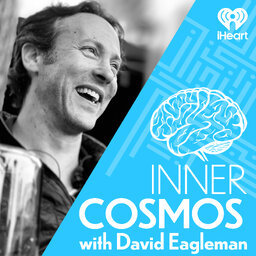Ep65 "Why do brains so easily fall for magic tricks?"
Did magicians discover tricks of the mind centuries before neuroscientists? Why can’t you see what they’re doing right in front of you? How do magicians steer your attention or appear to read your mind? Dive into the trapdoors of the human brain which allow the mind to get fooled. Join Eagleman with several guests: magician Robert Strong and cognitive neuroscientists Stephen Macknik and Susana Martinez-Conde.
 Inner Cosmos with David Eagleman
Inner Cosmos with David Eagleman


